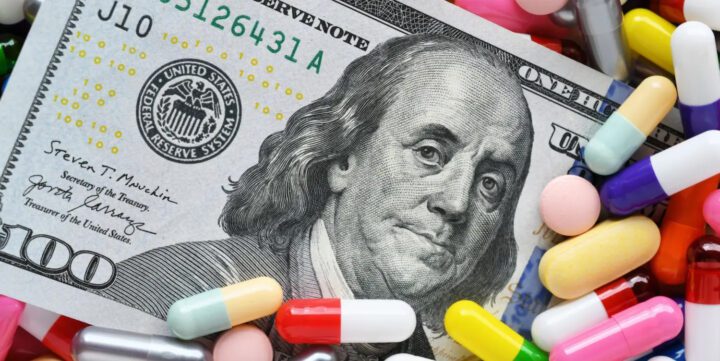Tariffs, the PBS and Rising Medicine Challenges
June 9, 2025
Political change
In an era of political turbulence and trade disputes, Australian healthcare providers are right to ask a simple but critical question: will America’s volatile pharmaceutical policies under Donald Trump push up the cost of medicines in Australia, and could they lead to shortages?
If you’ve been scanning the headlines, you’ve likely come across the term “PBS under attack.” It’s not hyperbole. While Australia hasn’t been directly singled out in recent U.S. policy statements regarding the costs of medicines, the implications for our Pharmaceutical Benefits Scheme (PBS), supply chains, and ultimately our patients, are real and worth examining. General practitioners, pharmacists, and specialists all stand on the frontline of access to medicines, and that frontline could shift under the weight of international policy.
Uncertainty on both fronts
Donald Trump’s recent executive order demands that pharmaceutical companies lower prices for American consumers within 30 days, or face further intervention. On its own, this would appear to be a domestic policy move, but given that U.S. pharmaceutical prices are roughly four times higher than in Australia, it inevitably places pressure on global pricing dynamics.
Australian medicines are already tightly regulated through the PBS, which ensures universal affordability by negotiating fixed prices with pharmaceutical manufacturers. But with the U.S. leaning hard on these same companies to lower domestic prices, manufacturers may begin to push back against Australia’s price constraints, either by refusing to list certain drugs under the PBS or by demanding higher compensation. In addition, with lower pharmaceutical prices inevitably hitting the U.S., we are bound to see a higher uptake domestically and international shortages to come.
According to Flinders University health economist Professor Jonathan Karnon, “It’s a pretty high probability… either the Australian government will have to pay more, or the Australian consumers won’t have access to as many new pharmaceuticals.”
Who pays the additional price?
At a political level, the Albanese government has doubled down on protecting the affordability of medicines. The 2024–25 Federal Budget committed a $4.3 billion investment into making medicines cheaper and sustaining the strength of the pharmacy sector. The PBS co-payment freeze, $7.70 for concession card holders and $31.60 for others, has been extended, saving Australians hundreds of millions of dollars.
However, there’s a catch. While patients are protected from rising prices in the short term, these savings are underwritten by government expenditure – and that pressure may not be sustainable if manufacturers demand more for new or existing listings. Even worse, pharmaceutical companies might choose to delay bringing products to Australia or withdraw them altogether if our regulated pricing model becomes unattractive compared to other markets.
Weathering the storm
To be clear, Australia is a relatively small player in the global pharmaceutical trade. Our exports to the U.S. are mostly limited to blood products and vaccines, particularly from major players like CSL. But these companies also have vast U.S. operations, CSL employs over 19,000 people across 44 states, which positions it well to navigate or even avoid tariffs. Telix Pharmaceuticals has echoed similar sentiments, suggesting their U.S. infrastructure shields them from significant disruption.
Yet for companies without that buffer, or for essential medicines not produced locally, the risk of supply chain turbulence remains. Just look at what’s already happening in the medical device sector. American hospitals are preparing for shortages of surgical gloves, syringes, and anaesthesia equipment, largely sourced from China, after facing tariffs as high as 145% (temporarily reduced to 30%). Though some Australian exporters like Cochlear and ResMed have avoided these tariffs by invoking U.S. disability import laws, pharmaceuticals are not guaranteed the same leniency.
If Trump follows through on his plan to impose a 25% tariff on imported pharmaceuticals, an increase that could cost U.S. consumers $51 billion annually, the global supply chain will shift. We may see companies prioritise U.S. production, delaying or rerouting shipments to other markets, including Australia.
The politics of pricing
U.S. pharmaceutical lobby groups, like the Pharmaceutical Research and Manufacturers of America (PhRMA), are pushing back. They argue that foreign countries – “socialist” pricing systems like the PBS – are free-riding on U.S. innovation by underpaying for medicines. This sentiment could drive policy to penalise countries like Australia, not through direct trade war measures, but by behind-the-scenes pressure on pharmaceutical companies to rebalance their global revenue. This presents a dilemma. If pharmaceutical companies are squeezed in the U.S., where do they seek to recoup those losses? High-income nations with regulated schemes, like Australia, are the next logical targets.
No changes on Australian soil yet
The good news is that Australia’s PBS remains one of the most effective mechanisms for equitable drug access in the world. The system has proven resilient, even amid global supply shocks during the COVID-19 pandemic. But that doesn’t make it immune.
Health professionals need to be aware that we may see delays in drug availability for new listings on the PBS, increased lobbying from pharmaceutical companies to raise approved prices, and potential disruptions in supply chains if global manufacturing priorities shift.
There is, however, reason for cautious optimism. The Albanese government’s health budget strategy signals a strong commitment to universal access and ongoing PBS protections. In addition to freezing PBS co-payments, they are investing in expanded listings, Indigenous health access through the Closing the Gap co-payment, and improved medication adherence via increased Dose Administration Aid funding.
For now, GPs in particular should be alert to patient concerns about availability and affordability, especially those managing chronic disease or on high-cost, life-sustaining therapies, while we watch to see how this all pans out.












